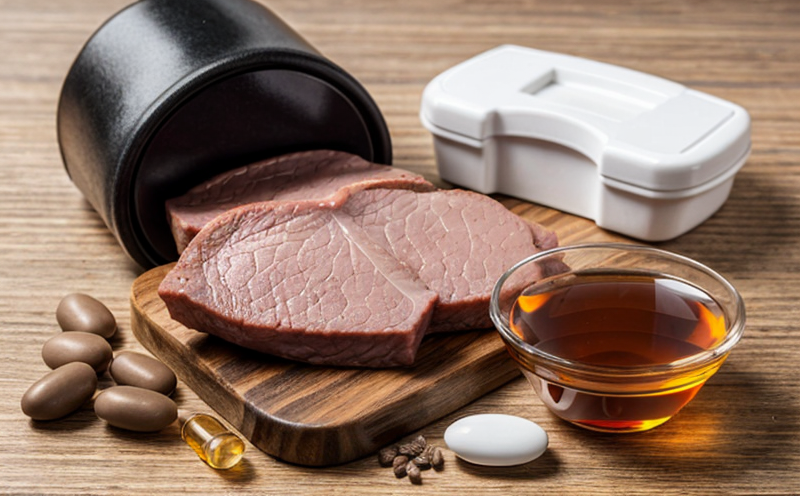Enzyme Biomarker Testing in Rodent Liver Toxicology
The liver is a vital organ that plays numerous roles, including detoxification of blood toxins, protein synthesis, and carbohydrate metabolism. Hepatic toxicity from pharmaceuticals, chemicals, or environmental pollutants can lead to severe health issues. Enzyme biomarker testing provides critical insights into hepatic function by evaluating the activity levels of key enzymes involved in various metabolic pathways.
Enzymes such as alanine aminotransferase (ALT), aspartate aminotransferase (AST), and alkaline phosphatase (ALP) are commonly used biomarkers for assessing liver health. In rodent models, these enzymes can serve as early indicators of hepatic damage due to toxic exposure. By quantifying the levels of these enzymes in serum or tissue samples, researchers and clinicians can identify potential hepatotoxicants at an early stage.
In rodent liver toxicity testing, enzyme biomarker analysis is often conducted alongside other assays like histopathology and biochemical endpoints. This comprehensive approach helps in understanding the mechanism of action behind hepatic injury. For instance, elevated AST levels may indicate cell necrosis or cytolysis, while increased ALP might suggest cholestasis.
The process involves several steps:
- Animal husbandry: Rodents are housed under controlled conditions to ensure consistent physiological parameters.
- Sample collection: Blood samples are collected via tail vein puncture or cardiac perfusion. Tissue samples may be taken from the liver for further analysis.
- Specimen preparation: Serum is separated from blood cells by centrifugation, and tissue homogenates are prepared using appropriate buffers to maintain enzyme stability.
- Biochemical assay: Enzyme activities are measured using specific substrates and colorimetric or spectrophotometric techniques. Common methods include the use of kits validated according to international standards like ISO 15195-2 and ICH Q3D(R1).
The results obtained from enzyme biomarker testing provide valuable data for risk assessment during drug development, environmental impact studies, or chemical safety evaluations. Understanding these biomarkers aids in the design of safer products by identifying potential hepatotoxicants early in preclinical stages.
Moreover, this testing contributes significantly to regulatory compliance and ethical considerations in animal research. Regulatory bodies such as FDA (USA), EMA (EU), and PMDA (Japan) recommend or mandate such tests for certain classes of drugs and chemicals.
Why Choose This Test
- Predictive power: Enzyme biomarker testing offers a non-invasive method to predict hepatotoxicity, allowing for early intervention and mitigation.
- Comprehensive insights: It provides detailed information about the extent of liver damage and the specific mechanisms involved.
- Regulatory compliance: This test aligns with international standards ensuring product safety and market access.
- Ethical considerations: By identifying potential risks early, it supports more humane animal research practices.
The use of rodent models in this testing ensures high reproducibility and reliability. These animals share a similar metabolic profile with humans, making their responses to toxicants highly indicative of human outcomes.
International Acceptance and Recognition
The enzyme biomarker testing in rodent liver toxicity is widely accepted across the globe. International organizations such as the World Health Organization (WHO) and the European Medicines Agency (EMA) emphasize the importance of this test for assessing the safety profile of new pharmaceuticals.
Standards like ISO 15195-2 have been developed specifically to guide laboratories performing these tests, ensuring consistency in methodology. Additionally, regulatory bodies such as the FDA and EMA reference these standards when approving drugs or chemicals.
The acceptance extends beyond pharmaceuticals into other sectors where rodent models are used for testing. For instance, in environmental toxicology, this test helps identify pollutants that could pose risks to public health.
Competitive Advantage and Market Impact
The ability to accurately assess hepatic toxicity early in the development process offers several competitive advantages. Firstly, it reduces the likelihood of late-stage failures due to unexpected adverse effects. Secondly, it allows companies to focus resources on developing safer products.
In terms of market impact, successful completion and validation of this test can expedite product launches, thereby gaining a first-mover advantage in the market. This is particularly crucial for innovative drugs or chemicals that aim to meet stringent safety standards.
Furthermore, compliance with international standards enhances credibility among stakeholders, including regulatory authorities, investors, and consumers. It also opens up new markets where these products are required by law to undergo such testing before approval.





